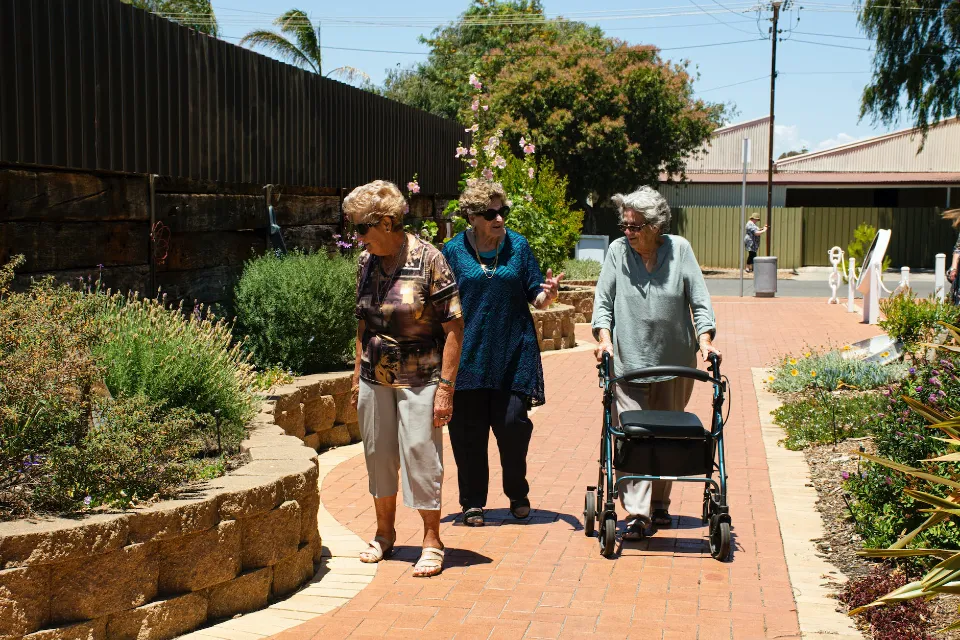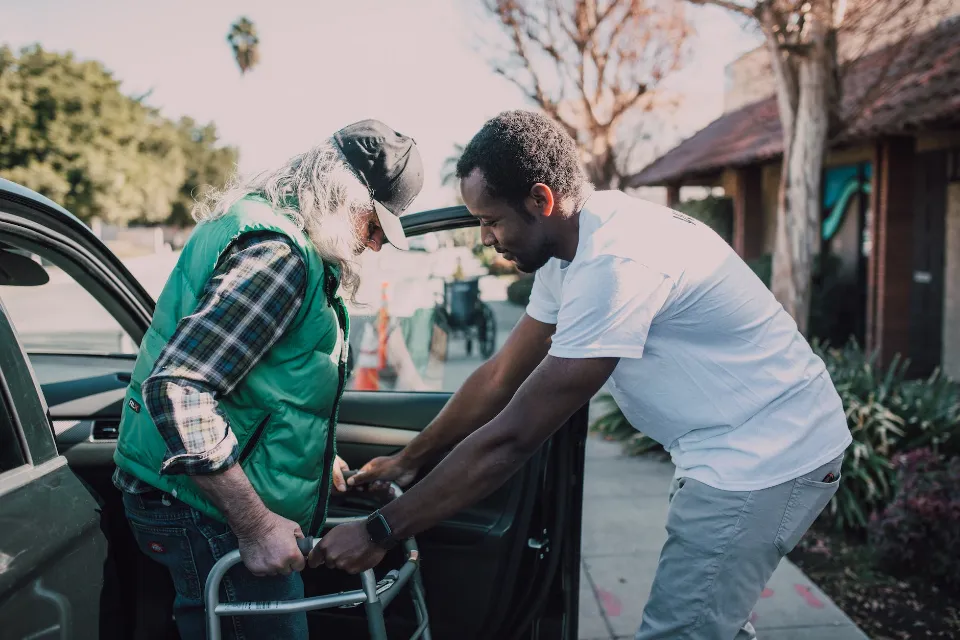You might be wondering how to use a walker on stairs if you or a loved one is unfamiliar with using a walker or using one for rehabilitation.
While using a walker is not always easy, using one on stairs is much simpler than many people realize. With the right tips, you can learn how to use a walker on stairs without a railing.
You can learn the right procedures for using a walker on stairs with the aid of this guide.
The Benefits of a Walker
If you struggle with mobility or health, there are many advantages to using a walker. Some of the top advantages of getting a walker include:
- Safer Walks: Your walks become much safer the moment you have a walker to lean on. You will feel more stable and be able to relax knowing that you are taking the proper safety precautions whether you are walking through your house, around the block, or at the store.
- Longer Walks: You’ll be able to walk further and for longer periods of time because walkers reduce weight bearing. They help you stay active and mobile.
- The Ability to Rest If Needed: Everybody eventually gets tired. Whether you have over extended yourself a little too much or you are just having a low energy day, walkers give you the ability to take a rest if needed.
- Extra Support: As a precaution, many people use walkers. From using a cane, they represent the next level. You only use it when you need a little extra support. In this sense, walkers are a great mobility support tool for situations when you know you’ll need it.
- Less Stress on the Body:Overall, your body experiences less stress thanks to the additional support and capacity to support some of your weight. They will help you have more stamina, keep your energy levels up, and allow you to go about your day without overworking your muscles.
How to Use a Walker on Stairs?
Go Up the Stairs
Use Walkers to Climb Stairs With Railings
Both a two-wheel walker and a standard (no wheels) walker can be used to climb stairs using the following instructions. The wheels might cause some instability.
- Position your walker between you and the first step while facing the bottom stair.
- Hold the handrail with the hand closest to it.
- Turn the walker to the side so that the crossbar is facing away from the stairs.
- The bottom step should be occupied by the front two legs of the walker. For stability, firmly press them against the step’s back.
- You can maintain your balance and assist in raising your legs onto the step by placing one hand on the upper grip of the walker and the other on the handrail.
- Your weaker leg should be drawn up to join your stronger leg on the step after you have planted your good or best leg firmly there.
- Once you are stable, reposition the walker one step higher. the same place as the first step.
- In the same way you did for the first step, climb up to the second.
- Continue doing this until you reach the top.

Use Walkers to Climb Stairs Without Railings
Climbing stairs with a walker but without a railing can feel less secure.
- Adjust the leading legs first so that they are seven inches shorter than the trailing legs (7″ is the standard rise on stairs and steps).
- the leading legs should be positioned one step higher than the trailing legs. The grips ought to stay level.
- Lift your better leg onto the lower step, take a few steps back, and then draw your weaker leg up onto the step after you’ve determined that the walker is securely in place.
- Then, when you are ready, move the walker up one step and repeat the process to the top of the stairs.
Go Down the Stairs
Use a Walker to Go Down the Stairs With a Railing
With a walker, going down a flight of stairs that has a railing is very similar to going up.
- Place yourself next to the railing at the top of the stairs.
- Put the crossbar of your walker facing you and swing it to the side, away from the railing.
- Put the walker’s two trailing legs on the stairway step closest to you.
- Step down the next stair with your weaker leg while keeping one hand on the railing and the other on the walker’s back grip.
- Move your other foot down to that step once you feel stabilized.
- Move your walker down one step and plant it securely.
- Lower yourself to the next stair. Weaker leg first.
- Repeat for every bottom-level step.
Use a Walker to Go Down the Stairs Without a Railing
But if you want to use a walker and there isn’t a railing, leaning against the wall can provide you with more stability.
- Swing the walker in front of you with the crossbar facing you after first making sure your weak leg is leading.
- Place the walker’s rear legs on the stair you are currently standing on, then lower your weak leg to the following step while placing most of your weight on the rear walker handle. Afterward, use your stronger leg.
- In order to reach the bottom, move the walker one step down and then repeat the process.

Reminders for Using a Walker
Obstacle Removal
Make sure the stairway is free of any obstacles that could cause you to trip and fall before you begin using it.
A few of the things you should remove right away include the following:
- Rugs
- Electric cords
- Boxes
- Other items
If you can’t make your stairway walker-safe on your own, ask someone you know to help you. Having tidy stairs will make going up and down with a walker easier and less dangerous.
Don’t Take Other Things
You must keep one hand on your walker and the other on the stair rail while ascending or descending them (more on this below). This is why, when using a walker, you should never attempt to carry anything up the stairs with you.
Trying to carry even small items can make you lose your grip on your walker and fall. If you need to take something up or downstairs with you, put them in your pockets or wear a fanny pack or backpack instead. You can also attach a small bag or pouch to your walker for easy, hands-free carrying.
It’s a good idea to keep things you use frequently nearby, such as chapstick, pens, paper, and water cups., both upstairs and downstairs. You won’t have to worry about bringing certain items up or down the stairs on a regular basis if you do it this way.
Conclusion
Although using a walker correctly requires some skill, whether you are recovering from surgery or adjusting to a new stage of life, using a walker is fairly straightforward. Knowing how to properly use a walker and get upstairs can help you overcome any obstacles you may encounter and help you take a step in the right direction toward good health.



